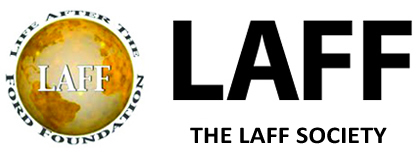CLIPPINGS
|
Keystone Accountability: planning, managing and communicating impact through constituency voice
From Alliance Magazine February 24, 2010 David Bonbright was a program officer in the Africa Programs from 1983 to 1987. Unlike NPC, Keystone's origins are exclusively in civil society. Collectively, the founders of Keystone in 2004 had over a hundred years of experience in non-profits and foundations, none in finance and business. We knew from experience that non-profits had poorly articulated goals and strategies and actually knew very little about their results and effectiveness, but having lived through the South African liberation movement, we also knew that social movements, though messy, work. So we sought to find how to make them work better. At the same time we were, like others who have been critical of market-based approaches, worried about the imposition of metrics and mindsets by the rich and powerful onto the civil society sector. We believed, then and now, that who does the counting is more important in social change that what is counted. So we set out to design an approach to results measurement that was grounded in the people who were meant to benefit from the work, and came up with the idea of constituency voice, where an organization plans, assesses, learns and reports with its primary constituents. Who those constituents are will vary according to what the organization does, but it will always include the people who are meant to benefit from its work. Constituency feedback yields data about results, about performance and about relationships. Feedback can be combined with evidence from other sources to round out the picture of impact and performance. We have worked with scores of organizations large and small over the past six years to create effective measures of constituency voice using surveys, interviews, focus groups and observational techniques. Little by little we are seeing an accumulation of good examples of constituency voice measurement practice. A group of East African foundations, for example, have used a common survey instrument to collect feedback on their performance from the 305 small community-based organizations that they fund (www.keystoneaccountability.org/resources/reports). Maybe the most complete example of constituency voice metrics is a joint project of the Gates Foundation and the Center for Effective Philanthropy, YouthTruth, which involves listening to the students in American high schools receiving Gates Foundation support. In many ways, constituency voice in social change is analogous to customer satisfaction in consumer markets. The customer satisfaction industry grew out of a social movement, the consumer rights movement. That movement led to the consumer rights legislation promoted by the Kennedy administration and passed in 1962. Without it, there would be no customer satisfaction industry today, or at least not the one we know. Which begs a question: does philanthropy require a social movement to move forward? If so, where will it come from? Or, to put the question as we see it: how can philanthropy move forward if charities and donors are not systematically measuring and reporting what those meant to benefit think about their work? Towards reconciliation? So, beginning from very different standpoints and with very different approaches, NPC and Keystone both work to explore and improve how values and evidence interact to drive non-profit and philanthropic activity. But it is critical to recognize that we mean much more by data than simple numbers, ratios or reductive proxies. We need only look at how focusing analysis of charities on cost ratios has twisted the non-profit sector to see the danger there. We are looking for more evidence about impact not because we want to build a technocratic world of mechanistic charities and giving, but because we want non-profits to be able to do full justice to their values and aims and to ensure that the people charities aim to help are, in both senses of the term, the ones who count. |
DISCLAIMER: The views expressed in these pages are the views of the authors and do not necessarily reflect the views of the LAFF Society.


